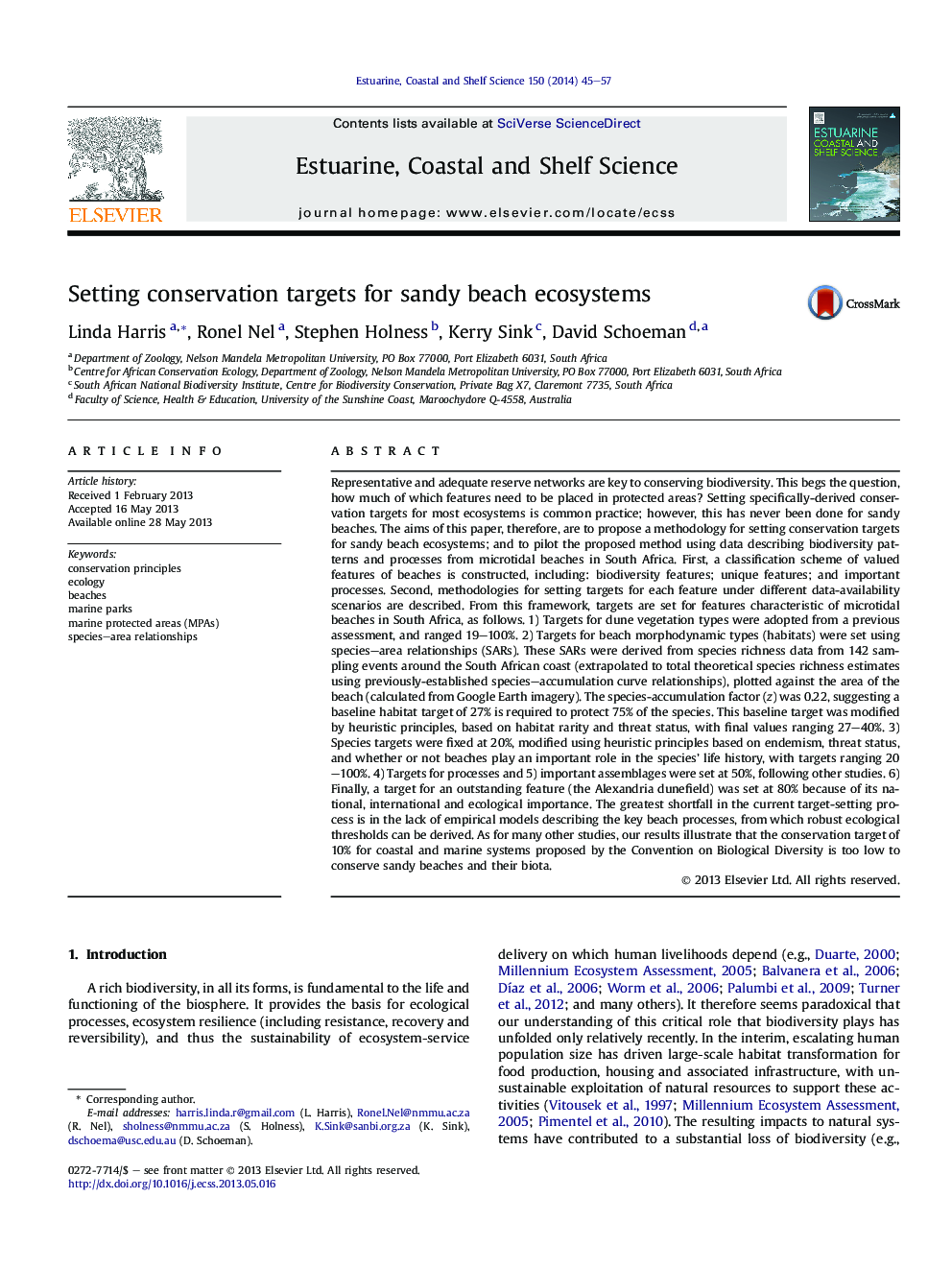| کد مقاله | کد نشریه | سال انتشار | مقاله انگلیسی | نسخه تمام متن |
|---|---|---|---|---|
| 4539647 | 1326616 | 2014 | 13 صفحه PDF | دانلود رایگان |
Representative and adequate reserve networks are key to conserving biodiversity. This begs the question, how much of which features need to be placed in protected areas? Setting specifically-derived conservation targets for most ecosystems is common practice; however, this has never been done for sandy beaches. The aims of this paper, therefore, are to propose a methodology for setting conservation targets for sandy beach ecosystems; and to pilot the proposed method using data describing biodiversity patterns and processes from microtidal beaches in South Africa. First, a classification scheme of valued features of beaches is constructed, including: biodiversity features; unique features; and important processes. Second, methodologies for setting targets for each feature under different data-availability scenarios are described. From this framework, targets are set for features characteristic of microtidal beaches in South Africa, as follows. 1) Targets for dune vegetation types were adopted from a previous assessment, and ranged 19–100%. 2) Targets for beach morphodynamic types (habitats) were set using species–area relationships (SARs). These SARs were derived from species richness data from 142 sampling events around the South African coast (extrapolated to total theoretical species richness estimates using previously-established species–accumulation curve relationships), plotted against the area of the beach (calculated from Google Earth imagery). The species-accumulation factor (z) was 0.22, suggesting a baseline habitat target of 27% is required to protect 75% of the species. This baseline target was modified by heuristic principles, based on habitat rarity and threat status, with final values ranging 27–40%. 3) Species targets were fixed at 20%, modified using heuristic principles based on endemism, threat status, and whether or not beaches play an important role in the species' life history, with targets ranging 20–100%. 4) Targets for processes and 5) important assemblages were set at 50%, following other studies. 6) Finally, a target for an outstanding feature (the Alexandria dunefield) was set at 80% because of its national, international and ecological importance. The greatest shortfall in the current target-setting process is in the lack of empirical models describing the key beach processes, from which robust ecological thresholds can be derived. As for many other studies, our results illustrate that the conservation target of 10% for coastal and marine systems proposed by the Convention on Biological Diversity is too low to conserve sandy beaches and their biota.
Journal: Estuarine, Coastal and Shelf Science - Volume 150, Part A, 5 October 2014, Pages 45–57
